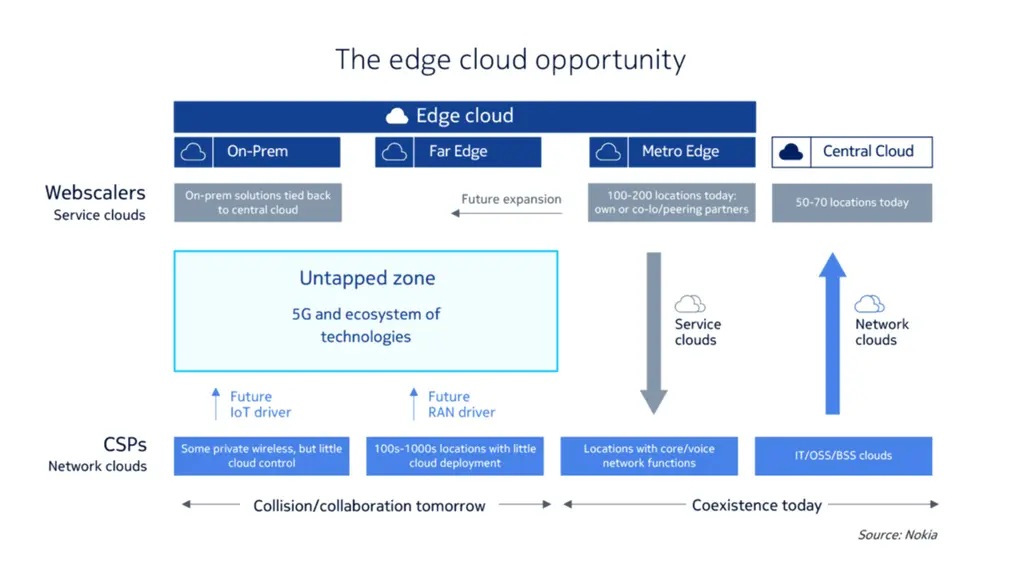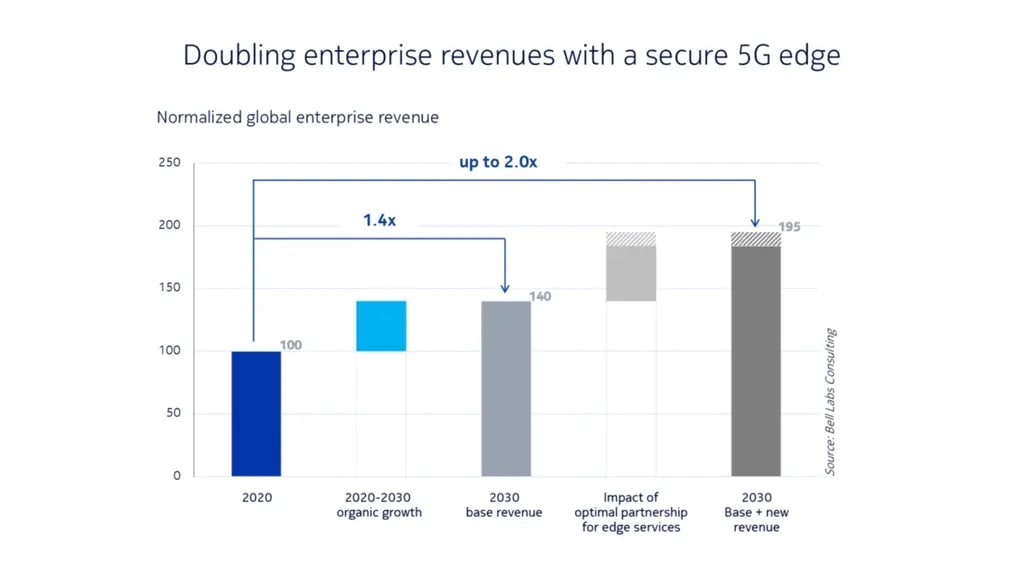The edge exponent

Imagine a world where connectivity and compute come together and are locally available to us at the edge like water from a tap. Of course, local water isn’t always available from the tap. As a recent Los Angeles Times article pointed out, the majority of LA’s water comes from imported sources such as the Los Angeles Aqueduct system, built during the 20th century to transport water from the Mono Basin and Owens Valley to Los Angeles. Unfortunately, with climate change and supply chain disruptions, imported water will become less viable over time and, given California’s propensity for drought, other solutions are needed based on local ground water management. Can Los Angeles get to a place, where it isn’t in need of daily imported water, and residents and businesses are guaranteed clean water supply sufficient to meet growing demand based on local supplies?
Quest for new value
That’s exactly the question I had in relation to 5G and the associated edge infrastructure. As the enabling foundation of our digital future, can we get to a place where we have instant, reliable, secure and sustainable connections to compute resources at the edge where the growing needs of enterprises and advanced applications are the greatest?
Could it be enabled, for instance, by communications service providers (CSPs) in partnership with ecosystem players in the very same way that LA County is innovating and investing in locally sourced, highly available fresh water supply to service the needs of its communities? Likewise, could compute plus connectivity flow through edge sources like locally sourced water instead of being imported from central clouds? In a new Bell Labs Consulting white paper, we explore the future of edge infrastructure and partnerships, and their impact on communications service providers.
This idea is gaining traction as future 5G architectures see cloud, compute and connectivity all collapse into one tightly integrated localized edge fabric. This fabric will be foundational in digitalizing businesses, automating industries and spurring new levels of productivity growth. Services will be rendered increasingly from the edge with the cloud and network working together in a secure and frictionless way for real-time value creation.
Achieving this, however, will require the massive rollout of distributed edge cloud nodes across cities and metropolitan areas and in communities with integrated service stacks capable of supporting new hyper-spectral sensory devices, as well as in new computing systems, new intelligent thinking systems (AI), new physical actuation systems and new on-demand production systems.
Considerations for future value capture
For those CSPs that are local and trusted, it opens a unique avenue to go big and unleash a CSP edge-dominant strategy. If executed well, they can claim a significant role across the entire edge architecture value stack, including networking, sites, cloud platform, high performance cloud network functions and applications. Especially important is an "untapped zone", which CSPs will need to capture, if they want a sizable share of the global edge-enabled opportunity.
To prepare for this opportunity, CSP’s must:
- Evaluate edge-as-a-platform-driven revenue opportunities from 5G-enabled B2B and B2C services relevant in their markets
- Determine use cases that are either relevant today or may become so in the future – for example, low-latency applications supported by 3GPP 5G Release 17 and Release 18
- Evaluate edge as a critical national infrastructure and seek regulatory relief for long-term strategic value capture — security and privacy will become foundational and of premium value
- Negotiate fair and rightful commercial equity with webscalers and partners, avoid collision and optimize value through collaboration

In view of the emerging market trends and evolving ecosystem, as well as the critical nature of the edge in the national context, it’s imperative that CSPs adopt an exponent mindset. They can re-write their economic future by enabling a secure 5G edge. One that offers plug-and-play connectivity and a compute infrastructure capable of running and monetizing industry solutions. With it, they can gain additional share from managed and infrastructure services, private networks and application provision, and realize as much as a doubling in their enterprise revenues by 2030.

Edging towards inclusive success
CSPs can harness what Bell Labs Consulting has identified as the “big inversion”— a future economic order that will be underpinned by rapid technological developments in advanced 5G high-performance networking, edge clouds and associated AI systems where partnerships will play a critical role.
CSPs need to chart their webscale strategy now, so that they can actively shape the partnership structure in ways that play to their strengths. They need to clarify the role of the edge, including the network edge, on-premises deployments and private network rollouts. And they need to resolve potential CSP-webscaler coopetition at the edge. Successfully managing this strategy will also require CSPs to continuously monitor and evaluate and leverage the roles of other key stakeholders such as ICT vendors, application developers, system integrators and governments to optimize the emerging micro-and macro-economic paradigms.
While the proximity of end users to processing power continues to be key to achieving better service performance, recent geopolitical events such as trade wars, pandemic-induced nationalistic tendencies towards hyper-localization, and the emergence of stringent local/national regulations have added new critical dimensions to the network edge. These events, coupled with increasingly strict data residency and sovereignty requirements being sought by governments worldwide, favor a dominant role for CSPs that enables them to realize exponential strategic and economic value from advanced 5G and edge infrastructure.
Written by Fuad Siddiqui
